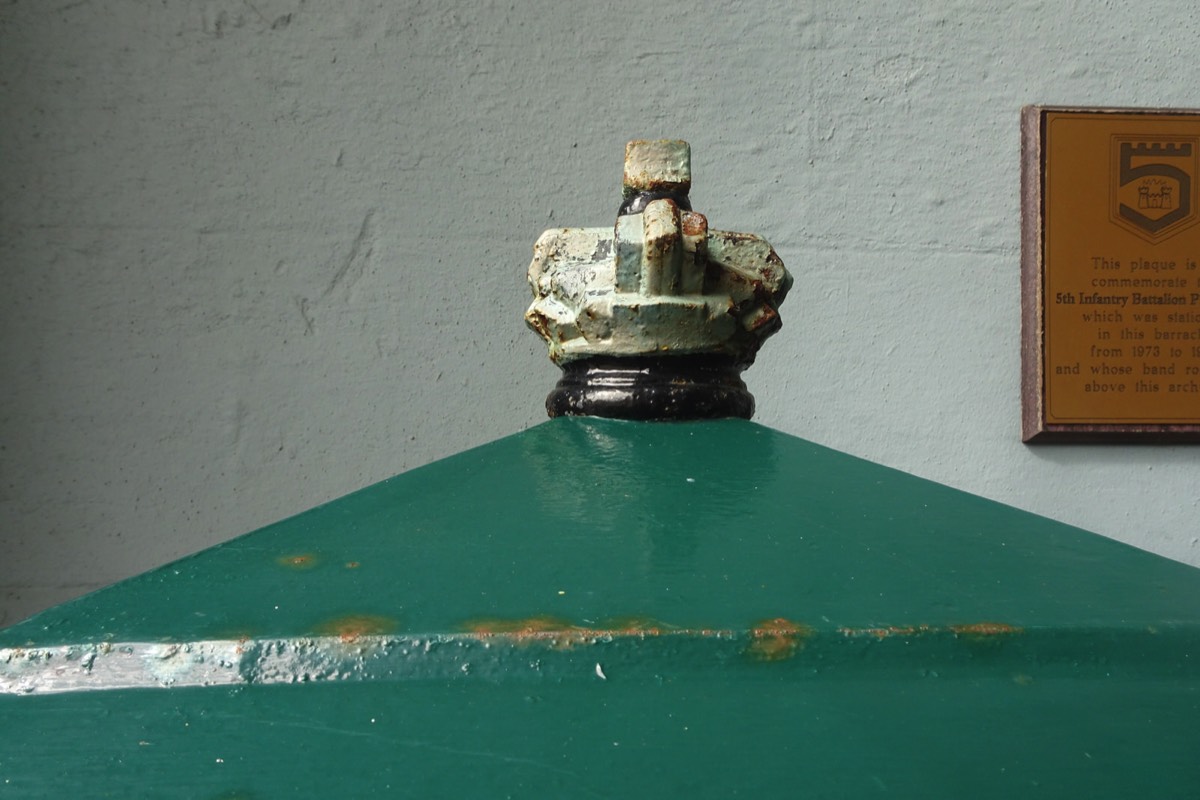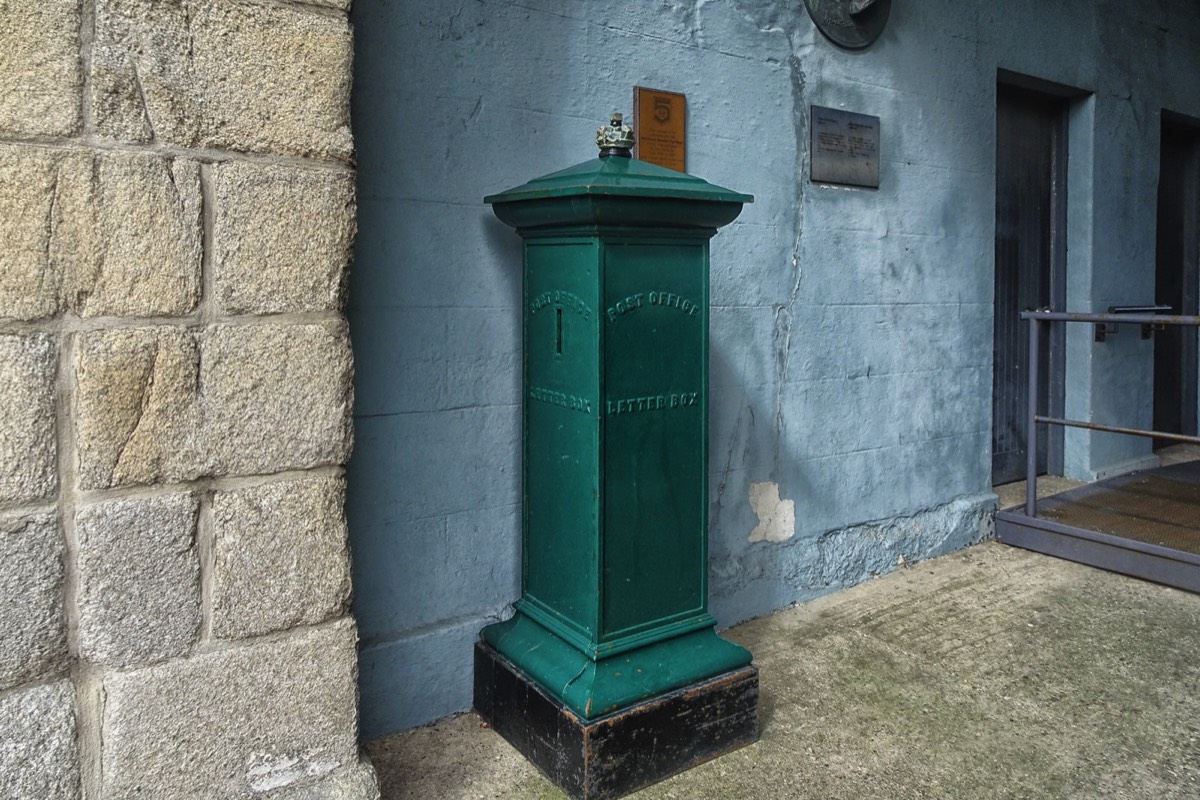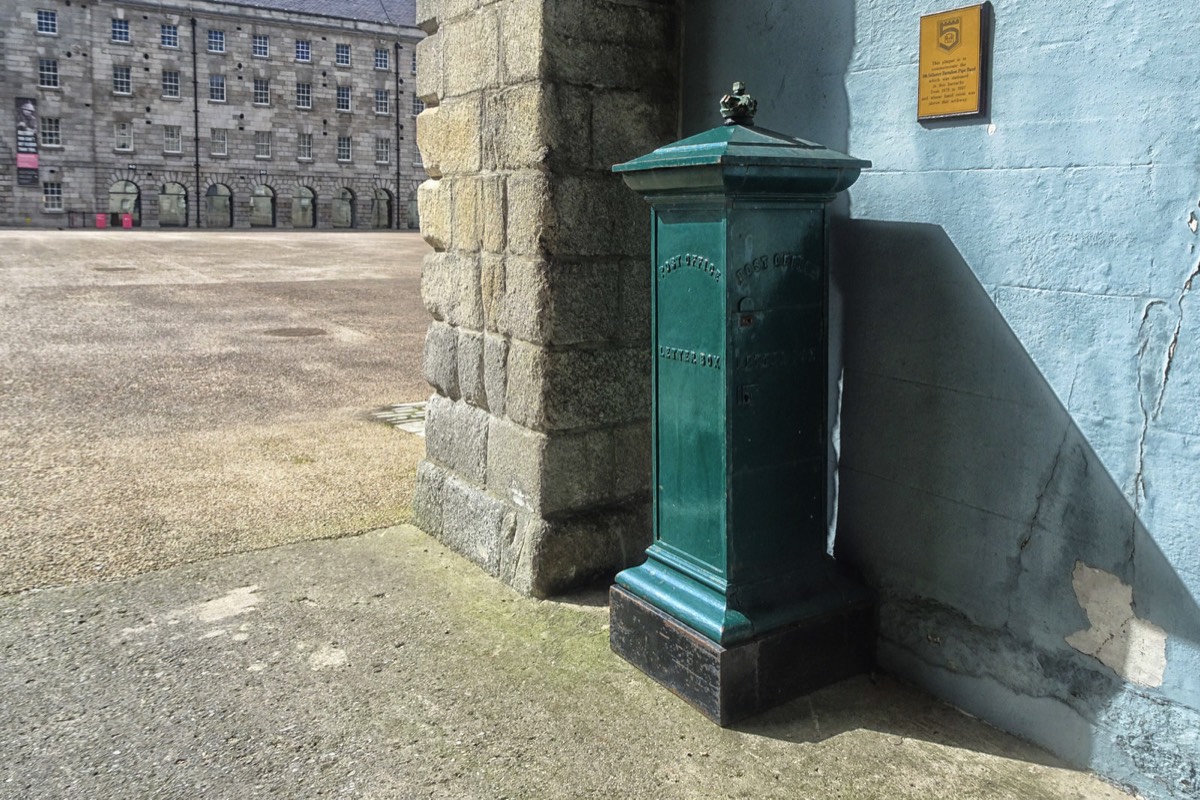ASHWORTH PILLAR BOX - ONLY SURVIVING EXAMPLE
The green post box, in various shapes and sizes, is a familiar sight on city streets and country roads throughout Ireland.
Introduced well over 150 years ago by the novelist, Anthony Trollope, who worked for the Post Office in Ireland for several years, the letter box is an instantly recognised symbol of the Post Office. The intention was to make it easier for people to post their letters and make it unnecessary for them to have to wait for a post office to open. The first boxes appeared on the streets of cities like Dublin, Belfast and Cork over 150 years ago and were subsequently introduced elsewhere. The big pillar boxes were soon joined by smaller boxes that fitted into walls and later by lamp boxes which were cheaper to make and could be attached to lamp and telegraph poles.
One particularly attractive box, the hexagonal-sided Penfold, caused complaints when it was introduced as letters could occasionally get stuck at the edges. The classic cylindrical shape did away with these problems, however. A great many old post boxes remain in use today and they bring an elegance to their localities that is often much appreciated.
Anthony Trollope (1815 – 1882) was a remarkable man. As a Post Office official he was responsible for introducing the pillar box; and it was during his 18 years working for the Post Office in Ireland and at Drumsna, Co Leitrim in particular, that he wrote his very first novel ‘The McDermotts of Ballycloran’ and got much inspiration for characters in the 46 works that were to follow.
In 1855 the first pillar box arrived in Ireland. Ireland’s oldest post-box, The Ashworth box, is now housed in the National Museum at Collins’ Barracks.
Introduced well over 150 years ago by the novelist, Anthony Trollope, who worked for the Post Office in Ireland for several years, the letter box is an instantly recognised symbol of the Post Office. The intention was to make it easier for people to post their letters and make it unnecessary for them to have to wait for a post office to open. The first boxes appeared on the streets of cities like Dublin, Belfast and Cork over 150 years ago and were subsequently introduced elsewhere. The big pillar boxes were soon joined by smaller boxes that fitted into walls and later by lamp boxes which were cheaper to make and could be attached to lamp and telegraph poles.
One particularly attractive box, the hexagonal-sided Penfold, caused complaints when it was introduced as letters could occasionally get stuck at the edges. The classic cylindrical shape did away with these problems, however. A great many old post boxes remain in use today and they bring an elegance to their localities that is often much appreciated.
Anthony Trollope (1815 – 1882) was a remarkable man. As a Post Office official he was responsible for introducing the pillar box; and it was during his 18 years working for the Post Office in Ireland and at Drumsna, Co Leitrim in particular, that he wrote his very first novel ‘The McDermotts of Ballycloran’ and got much inspiration for characters in the 46 works that were to follow.
In 1855 the first pillar box arrived in Ireland. Ireland’s oldest post-box, The Ashworth box, is now housed in the National Museum at Collins’ Barracks.




As an Amazon Associate I earn from qualifying purchases
You will find links to buy products from Amazon, Google and other partners. If you click on these links, you’ll find that the URL includes a small extra piece of text which identifies that the click came from my websites. This text is an affiliate code, and it means that I get a small percentage of the money you spend if you choose to buy that product, or, in some cases, other products from the site soon after. These affiliate links help pay the costs of producing my websites and ensure that the content is free to you.